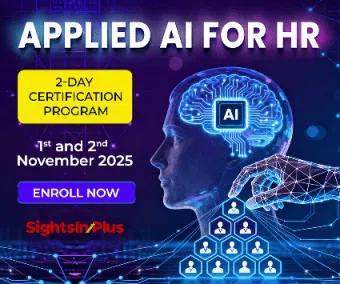It is that time of the year when businesses aim to onboard fresh hires from campuses to strengthen their roots and the foundation and a lot has changed about what brings cheer to these new hires and makes them stay with the organization.
As is clearly visible the expectations of employers are not the only ones that influence the newcomers but mainly it is the expectations of the incumbents which are playing a significant role in making them stick to the organization.
Generational Preferences
As is being interpreted by some socialists and thinkers, Generation Z is different from what we were in our times. We would agree with what superiors said was good, accept their thoughts as the major guiding factors and adapt quickly to it even though our personal choices would have been different.
We came up at times when our families were not so well to do and there was a zeal and enthusiasm to work hard to ensure that we earned enough and more for the wellbeing of the family. Gen-Z has already savored the benefits of what Gen-X and Gen-Y have brought in for them and earning means of livelihood has no more remained a challenge for them.
They are, therefore, more eagerly looking at subjects of their interest and are very clear that they would like to succeed in those areas only howsoever different they may be. Since individual interests have started taking priority over organizational interests the onboarding exercises have to be more suited to accommodate this behavioral and attitudinal change.
Employee Onboarding Process
During the training period, some of the incumbents are made to face the acid test of working in more difficult areas e.g., Manufacturing, sites etc. However, individuals come to the organization with their own dreams in their minds and when they find the same does not shape aligned to this thought process they are disengaged and look for alternative avenues outside of the organization.
Hence, onboarding must be shaped around the fulfilment of what the incumbent has aspired for oneself in a corporate organization. The old school of thought of moulding incumbents through seasoning in difficult areas and preparing for difficult corporate journeys is now only partially true. The patience of the incumbents has withered and there is tremendous peer pressure aggravated through social media where another side is always looking greener.
In large corporate houses, fresh graduates or post-graduate engineers, and management students are hired in massive numbers and then allocated to businesses. An empathetic approach to allocation may be more worthwhile. At the time of hiring itself, choices of students can be registered and collated summarily so that segregation as per interests is possible.
Arbitrary allocation leads to resistance as incumbents are not patient to wait for placement in the business unit of their choice and their area of interest. With IT on boom, it is recognized that it is possible to secure a comfortable workspace and still achieve individual goals with less physical discomfort. The possibility of training overseas in the early part of the career is an aspiration that is getting fulfilled in many MNC organizations which puts pressure on peer groups where overseas training is not a norm.
A dream welcome to incumbents on joining is being efficiently practiced by some of the corporate houses but this raises expectations, and they have a crash landing when they are placed into businesses/ sites. Therefore, entry experience to the organization should be made more realistic and practical.
A slow induction focused on understanding the organization, its ways of working, it’s people practices should take place providing them space to think, reflect and challenge the set norms. Technical training built around familiarizing with the technical operations of the organization is beneficial.
If it is evident that the organization will be unable to fulfil expectations of the individual, it may be worthwhile to understand through psychometric tests what are the areas for which the incumbent is more suitable and try to explore the possibility to relocate in those areas, if possible. Organizations may adopt a flexible approach and be open to adjust if they are seeking a win-win position.
Conversation with Top Leadership
Senior Management should find time to converse with the incumbents constantly and the culture around that should be encouraged. The fresh incumbents have lots of questions in their minds to which they need answers to be at peace.
Providing an opportunity to them to speak to senior employees in the organization helps them to dispel their apprehensions and fears, avoids confusion, and provides them an inroad to journey of success by emulating the paths treaded by the seniors and learn from their experiences both positive and negative.
A structured buddy scheme provides handholding at this time when it is most needed as they find an insider on whom they can depend and fearlessly ask questions for better understanding of the organization.
It is ok to structure trainings during the initial period for all incumbents and on the other hand, plunge them into their job function and learn on the job, however, organizations should consider avenues for fun and joy supporting hobbies, cultural interests, sports etc. so that the new routine for the individuals does not become too overbearing and dull.
Final Words
Ultimately organizations need to understand that incumbents are arriving at the organization from a different space and saddling them comfortably at the earliest possibility will enable them to get ready to learn and develop and deliver desired results faster.
It is an important bridge that individuals must cross to transition from one aspect of life into another. The process of onboarding is not complete until the incumbent has become self-reliant and independent and could vary from one month to more than a year. In certain complex organizations, the time frame is even larger.



